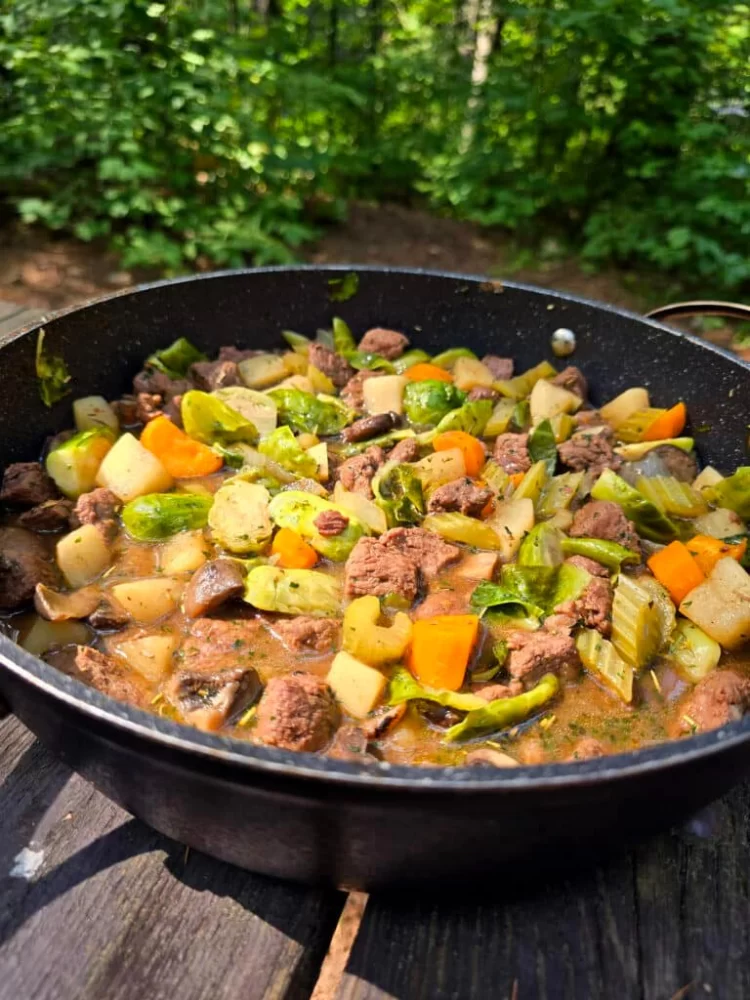- why-campfire-stews-are-perfect-for-outdoor-cooking
- choosing-the-right-vegetables-for-hearty-campfire-stews
- techniques-and-tools-for-stew-success-in-the-wild
- favorite-recipes-and-personal-stories-from-the-trail
- where-to-find-great-stew-ingredients-and-supplies
1. Why Campfire Stews Are Perfect for Outdoor Cooking
There’s something undeniably comforting about a bubbling pot of stew over an open flame. Campfire stews are the ultimate outdoor meal: easy to prep, rich in flavor, and endlessly customizable. They bring together the primal joy of fire-cooking and the satisfying heartiness of slow-cooked meals. When you’re surrounded by pine trees, crisp air, and starlit skies, a warm stew hits differently—it's not just food, it's memory-making.
Campfire stews are particularly ideal because they cook slowly and don’t require much attention once started. This means you can enjoy the company of friends or the solitude of nature without hovering over a grill. At Pine Cliff Resort, many campers say the best part of their trip is the shared evening meal—and stews are always a favorite.
2. Choosing the Right Vegetables for Hearty Campfire Stews
2.1 Vegetables That Hold Up to the Heat
Not all vegetables are suited for a long simmer over campfire heat. Hearty vegetables like carrots, potatoes, parsnips, turnips, sweet potatoes, and leeks work beautifully. They maintain texture, absorb flavor, and contribute to that stew-thick richness that makes campfire meals so satisfying.
2.2 Timing and Layering Your Ingredients
To avoid mushy or overcooked veggies, add them in stages. Root vegetables can go in early, while delicate ones like zucchini or spinach should be added near the end. If you’re including canned ingredients like tomatoes or beans, add them once your base vegetables are nearly done to avoid a soupy texture.
2.3 Seasonal and Local Choices
Using seasonal vegetables isn’t just about flavor—it connects your meal to the place and time. A stew made in late summer might feature corn, fresh herbs, and heirloom carrots, while an autumn version could lean into squash and mushrooms. Local markets near Pine Cliff Resort often offer fresh, regional produce that’s perfect for your pot.
3. Techniques and Tools for Stew Success in the Wild
3.1 The Dutch Oven Advantage
A cast iron Dutch oven is the MVP of campfire cooking. It distributes heat evenly, holds in moisture, and can handle both simmering and searing. Make sure yours has a tight-fitting lid, and consider using coals on top for more consistent temperature control. Pre-season it before your trip and pack a heavy-duty trivet or grate to keep it steady over flames.
3.2 Cooking Over Open Flame vs. Coals
While cooking directly over an open fire has rustic appeal, hot coals offer more control and reduce the risk of burning your stew. Start your fire early to build a solid coal base before cooking. Maintain a low, steady heat and rotate the pot every so often for even cooking.
3.3 Prepping Ingredients in Advance
Chop veggies and pre-mix spice blends at home to save time and reduce waste at camp. Use labeled reusable bags or containers to keep things organized. For multi-day hikes or longer stays at Pine Cliff Resort, vacuum-sealing pre-portioned stew kits can be a game changer.
4. Favorite Recipes and Personal Stories from the Trail
4.1 Campfire Beef and Root Veggie Stew
This classic recipe includes chunks of beef, carrots, potatoes, and onion, simmered in beef broth with rosemary and garlic. It’s a crowd-pleaser that warms you to your core after a day of canoeing or hiking. One family at Pine Cliff Resort even swears by adding a splash of red wine for depth—they call it their “wilderness bistro” version.
4.2 Smoky Lentil and Sweet Potato Stew
For a vegetarian twist, lentils offer protein and heartiness without the need for meat. Add sweet potatoes, celery, smoked paprika, and a touch of maple syrup for a rich and balanced meal. This stew is perfect for cooler nights and can be made entirely plant-based without compromising flavor.
4.3 Story from the Campsite
Last summer, a group of cyclists staying at Pine Cliff Resort hosted an impromptu stew-off by the lake. With four Dutch ovens and a variety of stews bubbling, they shared bites, stories, and firewood until midnight. For many of them, the shared meal—and the friendly competition—was the highlight of the entire trip.
5. Where to Find Great Stew Ingredients and Supplies
5.1 Local Markets and Farm Stands
One of the best parts of making campfire stew is shopping local. Small towns near outdoor destinations like Pine Cliff Resort often have charming farmers’ markets and co-ops. These are excellent places to pick up heirloom carrots, fresh herbs, or homemade broths that add a signature touch to your dish.
5.2 Tools Worth Packing
Besides the trusty Dutch oven, consider bringing a wooden spoon, long-handled ladle, heat-resistant gloves, and foil. A small cooler can keep meat and dairy fresh for a few days if packed correctly. Don’t forget biodegradable soap for cleanup—stew pots can be stubborn after a good simmer.
5.3 Where Pine Cliff Resort Comes In
If you're not sure where to begin with planning your outdoor kitchen, Pine Cliff Resort offers on-site recommendations for the best local vendors, camping cookware, and even stew-friendly ingredients stocked at nearby stores. It's your one-stop destination for both rustic nature and elevated campfire cuisine.







